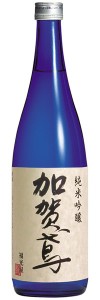For Goodness Sake
October 1 is World Sake Day. And why the heck not? Sake has come a long way in the U.S. from just a warm drink at Benihana to taking up some serious shelf (and refrigerator) space at the best wine stores. To think, it was not long ago that the national drink of Japan was all but overlooked here.
There are many historians of drink who credit (or blame) James Bond with greatly popularizing vodka in America, and thereby helping it nearly replace gin in the martini. But in the late ‘60’s, there was another clear drink which Bond made a move star: Sake.
In the 1967 spy-film You Only Live Twice, 007 is offered a cup of sake by Tiger Tanaka, the head of the Japanese Secret Service, which Bond gladly accepts over the offer of a “vodka martini,” saying, “I like sake, especially when it's served at the correct temperature, 98.4F, like this is."
That was about the time when sake entered America’s mainstream consciousness, as a warm, Asian delight, neither prominent nor even yet respected, but just as a curiosity.
As the Japanese economy soared in the ‘80’s, so did its cultural influence on America. Out of nowhere, everything was turning Japanese. For better or for worse, Hollywood joined the trend, making movies on the Japanese theme, many of which like Gung Ho and Karate Kid brought a comical yet positive take on Japanese culture and history. Suddenly, what was “big in Japan” became big in America in a big way. Exports from the Land of the Rising Sun were plentiful and ubiquitous, including: anime, ninjas, teppanyaki and hibachi, and, of course, sake.
Warm sake like James Bond drank is how many first timers were introduced to sake in the states. But good sake and great sake are almost always served chilled (like Bond’s martinis). It did not take long for many of the good sakes to take hold here. In 1990, imports of sake to the U.S. peaked at 2,549,979 liters. After tailing off briefly while the Japanese economy slumped in the ‘90s, imports of sake to the U.S. are now again on a constant rise. The national drink of Japan is here to stay.
October 1 is recognized as World Sake Day, or Nihonshu no Hi (Day of Sake), because the brewing of sake is typically begun around this time.
Sake is elegant and affordable, complex and easy to drink, served hot and cold and just the perfect thing to have on World Sake Day. Why not use the day as an excuse to get to know a few bottles of the good stuff? Kanpai!
Junmai Ginjo is the second highest grade of sake, and thus Kagatobi is a high quality quaff. The name Kagatobi refers to a legendary group of firefighters who fiercely defended the land of their lords in the Edo Period of Japan.
This is a refined sake with a cool, fruity flavor and distinct, pleasant notes of rice which reflect well the traditional methods used to craft it. It is easy to drink by experts and novices alike. It is preferred chilled. Silver medalists in the sake category of the 2013 NY International Beer Competition.
Naraman Junmai Muroka Bin Hiire
Naraman Sake Brewery is in the Fukushima Prefecture of Japan, an area greatly affected by the tsunami and earthquakes of 2011. The brewery, though, is far enough inland that is was spared any major damage.
Naraman Junmai Muroka Bin Hiire is a full-bodied, unfiltered (Muroka) high grade sake with a slightly higher than usual abv at 16.5%. Its flavors have been described as “bold” and “full of umami” with a light hint of honeydew melon on the nose. This is a choice that sake drinkers go back to for its interesting character and nice mouth feel. Can be had either warm or chilled. Also a sake medalist in the 2013 NY International Beer Competition.
Hakutsuru Sayuri Nigori Sake Japan
There is unfiltered and then there is not filtered at all. Nigori sake is full of small grain solids, and is thus cloudy like coconut milk and is the sweetest of sakes on a whole.
Sayuri (little lily) is soft and white, like its namesake flower, with delicate notes of tropical fruits. All nigori sake must be shaken well and served quite chilled. Due to the grain particles in the glass, some people are thrown off by the viscosity of this drink when compared to filtered sakes, but the pleasant aroma and the genuine rice flavor are representative of a very true sake experience.
Okunomatsu Formula Nippon Junmai Daiginjo Sparkling
Gentlemen, start your engines. This sake was created especially for Formula Nippon drivers to use to celebrate at the finish line instead of champagne. This is no gimmick, though. Like champagne, sparkling sake achieves its bubbles through secondary fermentation in the bottle.
Okunomatsu Formula Nippon is also like champagne in that this is crafted to be the finest quality of sparkling beverages. Junmai daiginjo is the top of sake craftsmanship, which, in this case, means the creation of a complex, refined, elegant bottle of bubbly- the perfect pour to acknowledge any meaningful occasion or to simply celebrate.



